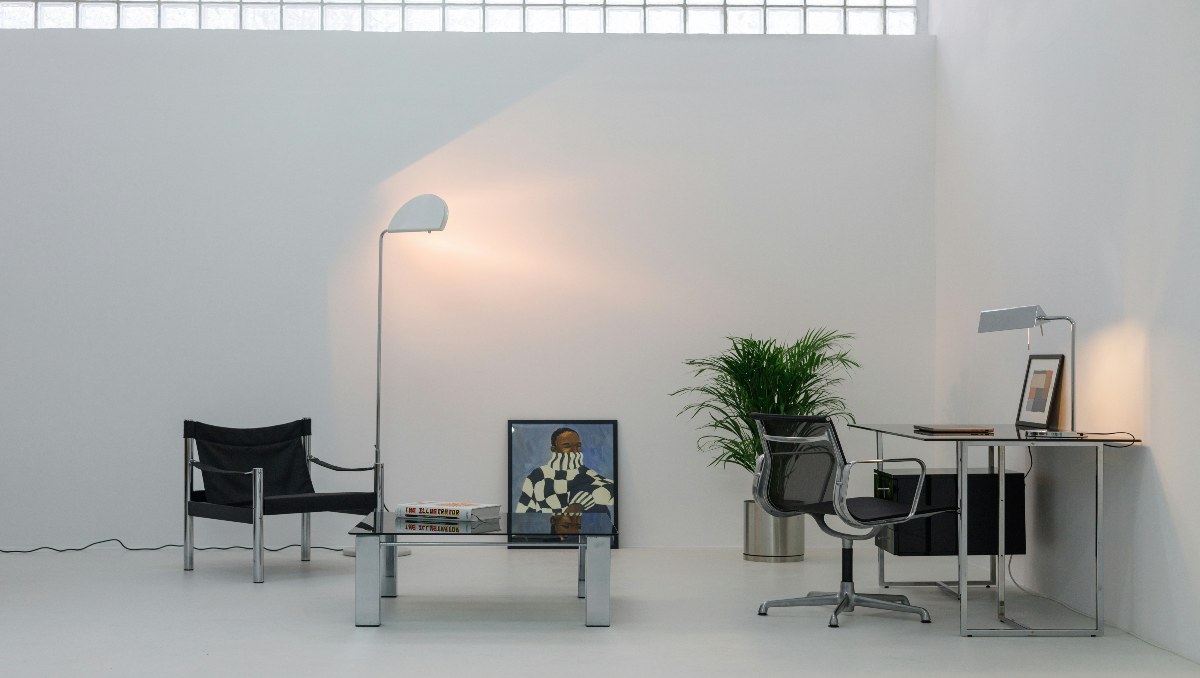The right chair for your workspace can significantly impact your productivity, comfort, and overall well-being. With countless options available, two of the most popular choices are task chair vs office chair. While they may seem similar at first glance, these chairs are designed with distinct features and purposes in mind. Understanding these differences is essential to make an informed purchase that suits your specific needs.
Key Takeaways
- Task chairs prioritize ergonomics, comfort, and adjustability, making them ideal for long hours of sitting and reducing back pain.
- Office chairs are affordable, stylish, and suitable for short tasks or casual use but lack advanced ergonomic features.
- Choosing the right chair depends on your work duration, budget, workspace size, and health needs.
This article breaks down the key differences between task chairs and office chairs, highlighting their design, functionality, and suitability for various work environments.
What is a Task Chair?
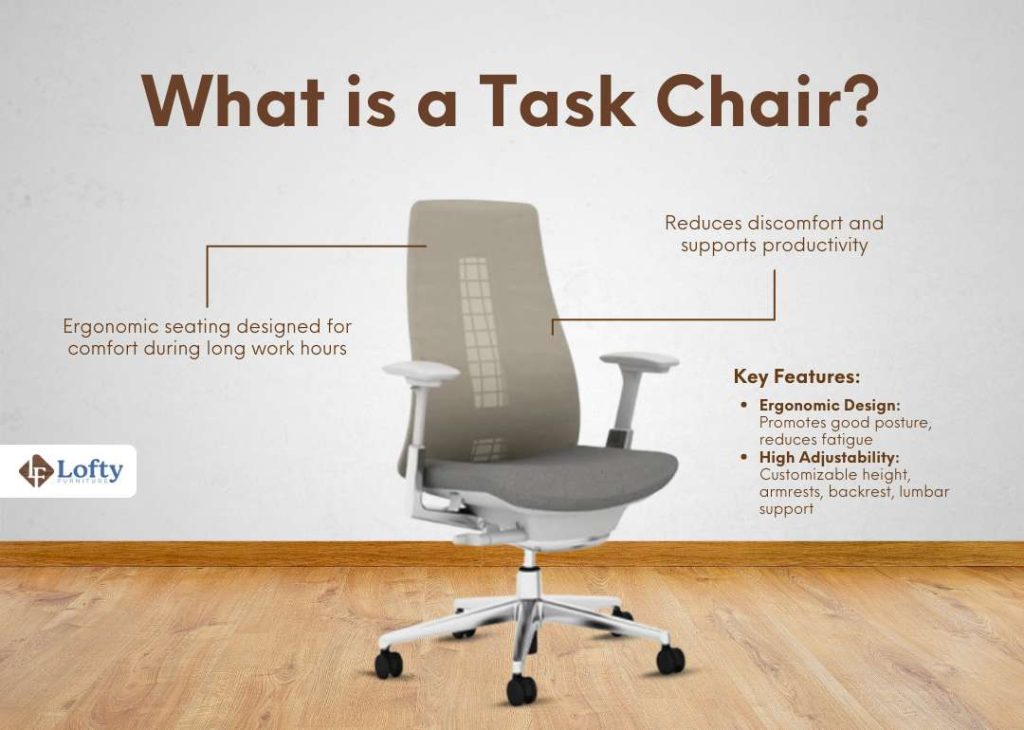
A task chair is an ergonomic seating option built for people who spend long hours at a desk. Unlike regular office chairs, task chairs focus on comfort and adjustability to support good posture and reduce muscle strain. Research shows these chairs can improve both health and productivity, making them a smart investment for anyone working at a desk. They’re perfect for professionals like designers, programmers, and office workers, offering comfort and reducing the physical strain of sitting for extended periods. Task chairs are fully adjustable, so you can customize the height, armrests, backrest, and lumbar support to fit your needs, ensuring a more comfortable and supportive workday.
What is an Office Chair?
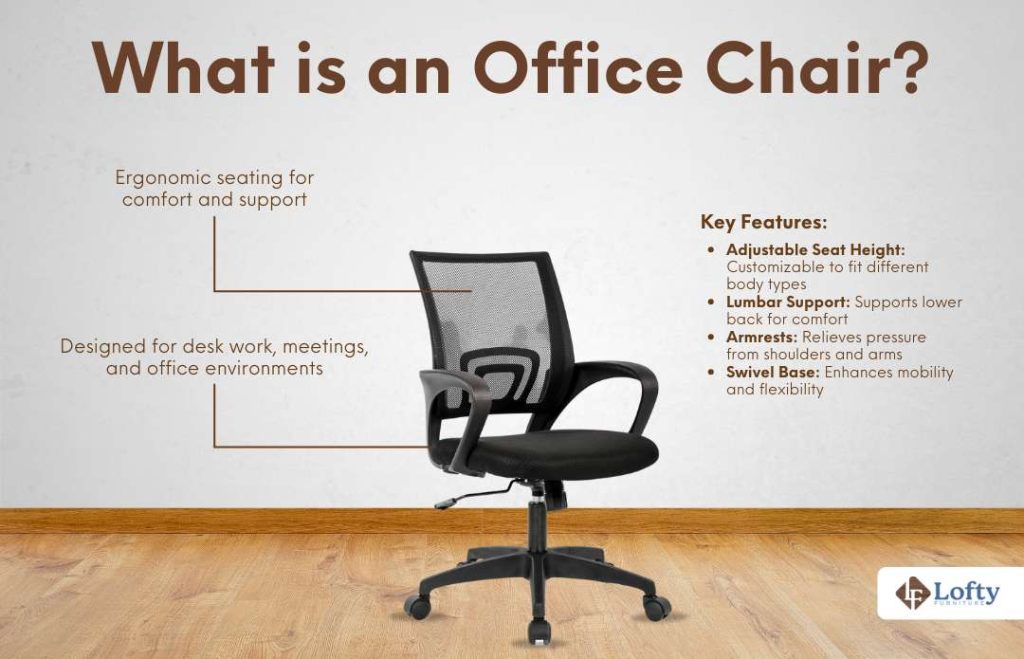
An office chair is a practical, versatile option for most workspaces. Unlike task chairs, which focus on long-term ergonomic support, office chairs are simpler and designed for general use. They’re great for tasks that don’t involve sitting for extended periods or needing extra support. Plus, office chairs tend to be more affordable, making them a budget-friendly choice for larger offices or shared spaces.
These chairs usually offer basic features, like seat height and back tilt adjustments. While they provide decent support for everyday tasks, they’re not meant for long hours of sitting or intense ergonomic needs. Office chairs work well in meeting rooms, shared work areas, or places where people sit for shorter stretches, making them a solid pick for casual or occasional use.
Upgrade your workspace with the perfect ergonomic office chair. Discover the difference a well-designed chair can make in your comfort and productivity.
Key Differences Between Task Chair vs Office Chair
Although task chairs and office chairs may appear similar at a glance, they cater to different needs and priorities.
Design and Aesthetics
When it comes to style, office chairs often have the upper hand. They come in a wide variety of designs, colors, and finishes, making them easy to match with different office themes and decor. This focus on aesthetics makes office chairs a popular choice for meeting rooms, reception areas, or modern workspaces that prioritize visual appeal. Task chairs, while functional, tend to prioritize performance over design. Their utilitarian appearance might not blend seamlessly into aesthetically-driven environments.
Cost
Cost is a significant factor distinguishing the two chair types. Task chairs, with their ergonomic features and high-quality materials, are generally more expensive. They represent an investment for individuals or businesses prioritizing employee health and productivity. Office chairs, however, are more affordable and accessible. Their simpler design and limited features make them a cost-effective option.
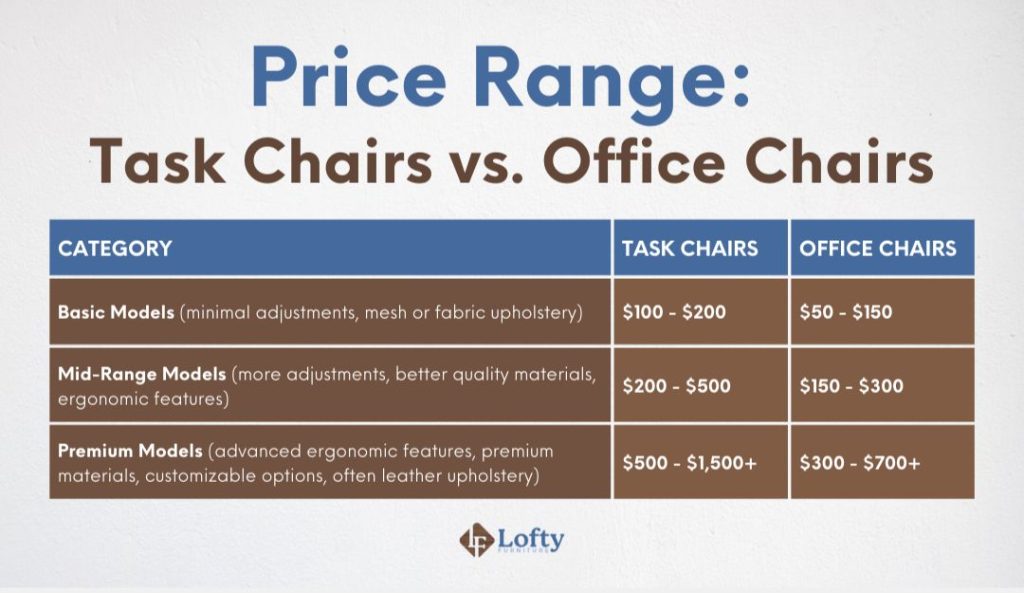
Mobility and Space Considerations
Office chairs are typically lightweight and compact, making them easy to move around or fit into smaller spaces. Task chairs, due to their robust build and additional chair adjustment mechanisms, are often bulkier and heavier. While this enhances stability and durability, it can make them less practical for tight spaces or settings where mobility is a priority.
Materials and Build Quality
Task chairs often feature premium materials designed for durability and comfort. High-density foam cushions, mesh backrests for breathability, and sturdy frames contribute to their long-lasting performance. In comparison, office chairs may use more economical materials to keep costs down. While they are still built to withstand daily use, the quality of materials, such as cushioning and fabric, might not match the longevity or support of task chairs.
To help you get a better understanding between task chair vs office chair, here’s a comparison table:
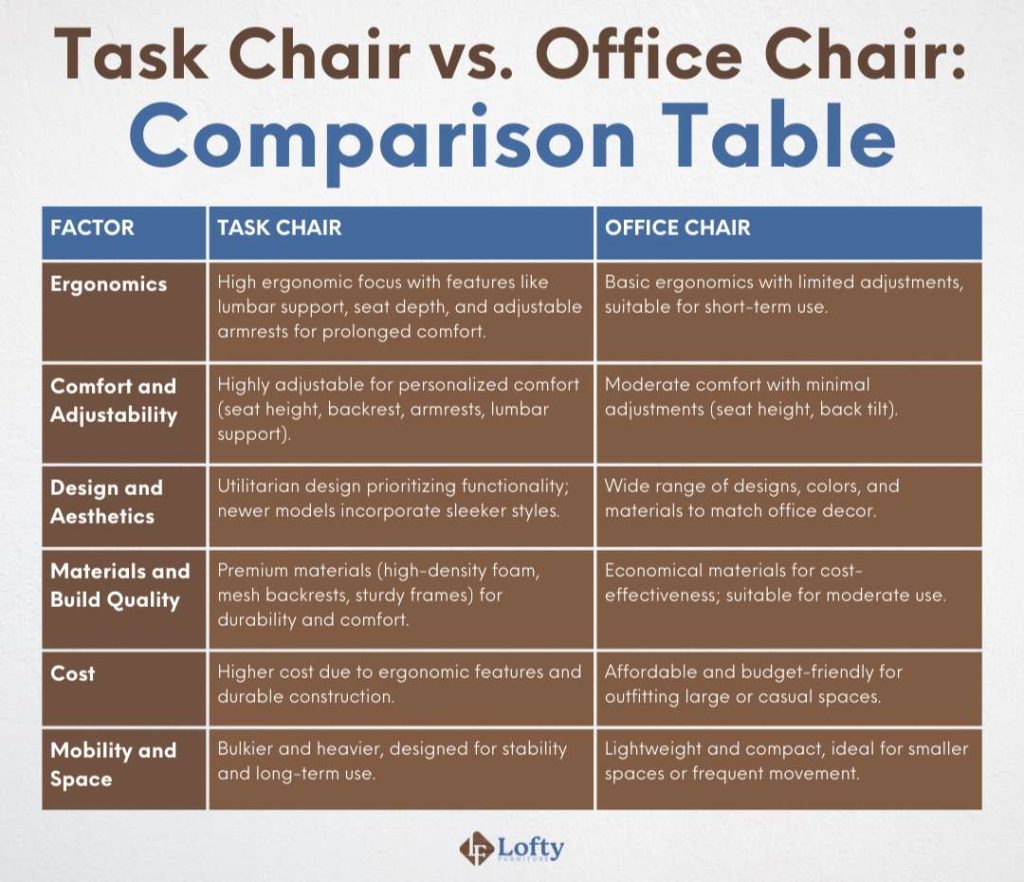
Which Chair is Best for Your Needs?
Buying the right chair depends on several key factors, including how long you’ll use it, the size and setup of your workspace, your budget, and your health priorities. If you’re working long hours at a desk or have specific ergonomic needs, investing in a chair with advanced features may be worthwhile. On the other hand, for occasional use or tighter budgets, a simpler design may suffice. Understanding your unique requirements will help you choose between a task chair and an office chair.
Best for Short Tasks: Office Chairs
For shorter sitting durations or tasks that require occasional use, an office chair is often the best choice. Its streamlined design and basic adjustability make it suitable for quick meetings, collaborative spaces, or home setups where sitting time is limited. Additionally, the lightweight and compact build of office chairs makes them easy to move or tuck away, which is particularly advantageous in smaller workspaces. If style and affordability are priorities, office chairs offer plenty of options without sacrificing basic functionality.
Best for Long Hours of Sitting: Task Chairs
When work demands long hours at a desk, a task chair is the superior option. Its ergonomic design, with adjustable lumbar support, armrests, and seat depth, helps maintain proper posture and reduces the risk of back pain and fatigue. Studies have shown that chairs designed with ergonomics in mind can significantly improve comfort and productivity during extended periods of sitting. While task chairs may come at a higher price point, they are an investment in your health and well-being, making them ideal for professionals who prioritize long-term comfort and support.

Final Thoughts
Task chairs are the gold standard for ergonomic support, offering features designed to promote posture, reduce strain, and enhance productivity during extended work hours. Office chairs, while simpler and more affordable, provide sufficient comfort for shorter periods or casual use, making them an excellent choice for those on a budget or with limited space. By considering factors such as duration of use, workspace setup, budget, and health priorities, you can make an informed decision that supports both your work style and well-being.
What are the main ergonomic benefits of task chairs?
Task chairs are designed to support the natural curvature of the spine, offering adjustable lumbar support, armrests, and seat depth to help users maintain proper posture.
Are office chairs suitable for long work hours?
Office chairs are not ideal for long work hours due to their limited ergonomic features. While they provide basic support, such as adjustable seat height and back tilt, they often lack the advanced customization needed to prevent discomfort or strain during extended sitting sessions.
What is the average price difference between task chairs and office chairs?
Task chairs are generally more expensive than office chairs, reflecting their advanced ergonomic features and durable construction. On average, task chairs cost about 20–50% more than their office chair counterparts.
Can task chairs improve productivity and reduce back pain?
Yes, task chairs can significantly improve productivity and reduce back pain. By promoting proper posture and providing customizable support, they minimize physical discomfort and fatigue, allowing users to stay focused and engaged for longer periods.
